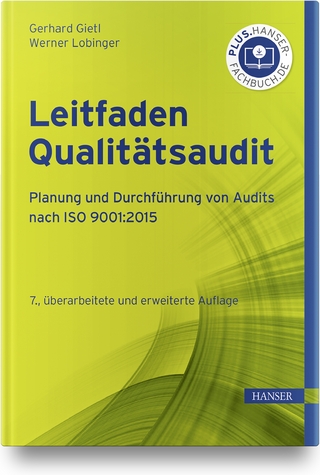
Project Management
Wolters-Noordhoff B.V. (Verlag)
978-90-01-57562-5 (ISBN)
Project Management introduces business and management students to project-based working as a means to tackle projects successfully in a unique and accessible way.
Not only in business circles, but also in the field of education, increasingly more activities are performed using a project-based approach. Consider, for example, comprehensive study assignments, internal projects and projects during work placements and the final stages of a degree. This book's line of approach is practice-oriented. Based on assignments, groups of two to three students work on a project plan and an executive summary. Students can also opt for a ‘real’ assignment for a company or for one of the cases of the accompanying website.
Added to this fifth edition are examples and illustrations, new sections about various subjects and a chapter about the flexible project approach Scrum.
Roel Grit is a bestselling author at Noordhoff Uitgevers and teaches Project Management, Information Management and Chemistry at Stenden University of Applied Sciences in Emmen.
Introduction
PART 1
Practical Theory
1 The project
1.1 Types of activities, types of work
1.2 Examples of projects
1.3 What is a project?
1.4 Moving from improvised to project based to routine activities
1.5 Types of projects
1.6 Things to remember
1.7 Doing things in phases
1.8 Why do things in phases?
1.9 The phases of a project: an illustration
1.10 When to do it as a project
1.11 Lifecycle of a project
1.12 Projects should be SMART
1.13 Carrying out the projects in this book
Assignments
2 People working on projects
2.1 Line organisation
2.2 The project organisation
2.3 The project sponsor
2.4 Future users
2.5 The project manager
2.6 The project members
2.7 Relationship sponsor and project manager
2.8 Task-oriented and people-oriented leadership
2.9 Working on a project
2.10 Team roles according to Belbin
2.11 Digital tools for collaboration
2.12 Team agreements
2.13 Creativity and brainstorming
2.14 Negotiating
2.15 Making decisions in a project
2.16 Related projects
2.17 Outsourcing a project
2.18 Projects and cultural differences
Assignments
3 The project from start to finish
3.1 Organising and carrying out the project
3.2 Reasons for starting the project
3.3 From reasons to do a project to actually doing the project itself
3.4 Project proposal
3.5 Initial meeting with the sponsor
3.6 Setting up the project
3.7 Project start-up meeting
3.8 Design and preparation
3.9 Realisation of the project result
3.10 Completion of the project
3.11 Project in time
3.12 Monitoring aspects of a project
3.13 Monitoring projects in practice
3.14 Why projects fail
3.15 Project risks
3.16 Terminating a project prematurely
3.17 Project management: methods
Assignments
4 Planning
4.1 Why plan?
4.2 Concepts and terms
4.3 Gantt charts
4.4 Network diagrams
4.5 Deriving a Gantt chart from a network diagram
4.6 Adjustments to a planning
4.7 Which activities are required?
4.8 Planning software
4.9 Using planning software
4.10 Planning a large project in phases
4.11 Time management
4.12 Mini-course on MS Project on the website
Assignments
PART 2
How to do a project: methods and tools
5 How to do a project – the P6-Method
5.1 The P6-Method
5.2 Overview of the six steps
5.3 Step 1: Initiating the project
5.4 Step 2: Organising the project
5.5 Step 3: Writing a project plan
5.6 Step 4: Executing the project
5.7 Step 5: Delivering the project’s results
5.8 Step 6: Finalizing the project
Assignments
6 Writing a project plan
6.1 The project plan
6.2 Dividing the project plan into sections
6.3 Background information
6.4 The project’s results
6.5 Project activities
6.6 Project scope and conditions
6.7 Intermediate results
6.8 Quality control
6.9 The project organisation
6.10 Planning
6.11 Costs and benefits
6.12 Risk analysis
6.13 Writing the project plan
6.14 The project’s files
Assignments
7 Using Scrum
7.1 Scrum
7.2 Scrum applications
7.3 The benefits and drawbacks of Scrum
7.4 Scrum components
7.5 Roles within Scrum
7.6 Information during the Scrum process
7.7 Meetings during the Scrum process
Assignments
8 Organising meetings
8.1 Project meeting
8.2 Preparing for the meeting
8.3 The meeting’s agenda
8.4 The meeting itself
8.5 After the meeting
Assignments
9 Conducting interviews
9.1 Types of interviews
9.2 The three stages of an interview
Assignments
10 Writing a report
10.1 Preparing to write the report
10.2 Putting the report together
10.3 The structure of the report
10.4 The main contents and finishing touches to the report
Assignments
11 Holding a presentation
11.1 Organisation and contents of a presentation
11.2 Using an overhead projector or screen
11.3 The structure of a presentation
11.4 The presentation itself
Assignments
12 Making an executive summary
12.1 The purpose of an executive summary
12.2 The components of an executive summary
Assignments
Final Assignments
Appendix 1 Risk Analysis
Appendix 2 Website www.projectmanagement-english.noordhoff.nl
Bibliography
About the author
Index
| Erscheinungsdatum | 06.08.2021 |
|---|---|
| Reihe/Serie | Routledge-Noordhoff International Editions |
| Zusatzinfo | 24 Tables, black and white; 43 Line drawings, black and white; 15 Halftones, black and white; 58 Illustrations, black and white |
| Verlagsort | Groningen |
| Sprache | englisch |
| Maße | 170 x 240 mm |
| Gewicht | 400 g |
| Themenwelt | Wirtschaft ► Betriebswirtschaft / Management ► Logistik / Produktion |
| Wirtschaft ► Betriebswirtschaft / Management ► Projektmanagement | |
| Wirtschaft ► Volkswirtschaftslehre | |
| ISBN-10 | 90-01-57562-5 / 9001575625 |
| ISBN-13 | 978-90-01-57562-5 / 9789001575625 |
| Zustand | Neuware |
| Informationen gemäß Produktsicherheitsverordnung (GPSR) | |
| Haben Sie eine Frage zum Produkt? |
aus dem Bereich


